fabian perez

artist biography
fabian perez’s artwork finds its roots in his unorthodox upbringing. born in buenos aires in 1967, perez grew up catching glimpses of the nightlife at his father’s nightclubs and bordellos. with his artistic mother and roguish father, perez saw the glamour and romance of the world they inhabited: passionate and elegant, refined and secretive. now, his memories of those stylish and fascinating characters populate his work.
after losing both parents before his twenties, perez began to travel the world, developing his artistic talents as he did so. he also discovered martial arts, and studied with a dedication that would later impact the discipline he used to perfect his art style.
after his career took off while he was working in italy, perez experienced a growing recognition and fame for his now famous art style. he eventually moved to the us, where accolades and admiration for his art has continued to grow. he now lives and works in los angeles, still creating work and touring to interact with his always expanding group of followers.
style
perez has pioneered his own figurative style, rather than allowing himself to be bound by the definitions of others. he calls his style “neo-emotionalism,” as it is intended to first and foremost represent the emotion in the moment captured.
each artwork carries a narrative, with perez often creating works in a series with various moments of a continuing story. however, he makes sure to only leave a suggestion for the viewer, choosing to evoke certain impressions rather than to spell out his meaning. to this end, he relies on the use of shadow and light to direct the viewer’s gaze, in an approach reminiscent of classic chiaroscuro compositions. he used realism to a degree, but also keeps his brush strokes loose and flowing.
perez works in acrylic, the fast drying time allowing him to work fluidly and without stopping. his use of colour highlights the nostalgic quality of his work, with a rich, warm palette and deep shadows often dominating each piece. this, along with the imagery of evening dresses, suits and classic cars, reminds the viewer that what they are seeing is drawn from romanticised memories rather than harsh reality.
-
Now Sold
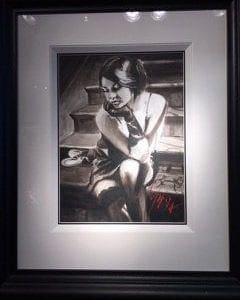
Fabian Perez “Saba At The Stairs” Original
-
Now Sold

Fabian Perez ‘Study For Saba At Las Brujas’ Original
-
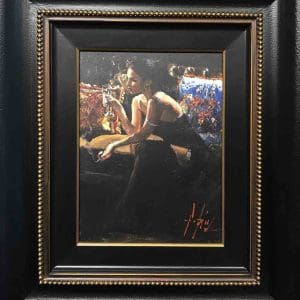
Fabian Perez “Eugenia XI” Original
£13,495 -

Fabian Perez ‘Man In Black Suit, Richer’ Original
£54,500 -
Sale!
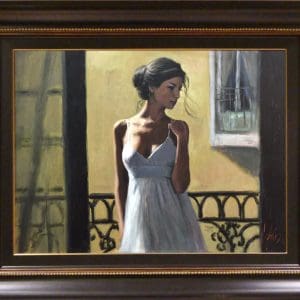
Fabian Perez ‘The Balcony XI’ Original
£51,790£37,600 -
Sale!
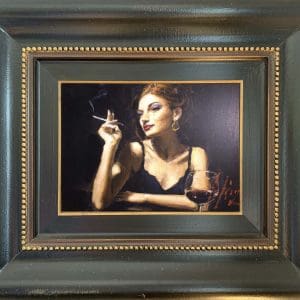
Fabian Perez ‘Girl With Red Hair’ Original
£11,750£10,400 -
Now Sold

Fabian Perez ‘Man In Black Suit’ Original
-
Sale!
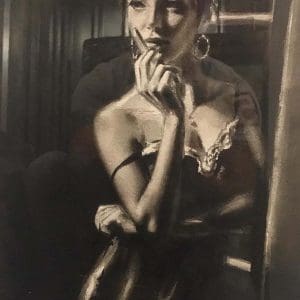
Fabian Perez ‘At The Door’ Original
£7,500£6,000 -
Sale!

Fabian Perez ‘Tango’ Bronze Sculpture *RARE SOLD OUT*
£10,860£9,860 -
Now Sold

Fabian Perez ‘Man At The Bar’ Bronze Sculpture
-

Fabian Perez ‘Man Sitting In Chair’ Bronze Sculpture *Rare SOLD OUT edition*
£5,350 -

Fabian Perez ‘The Embrace’ Limited Edition
£950
